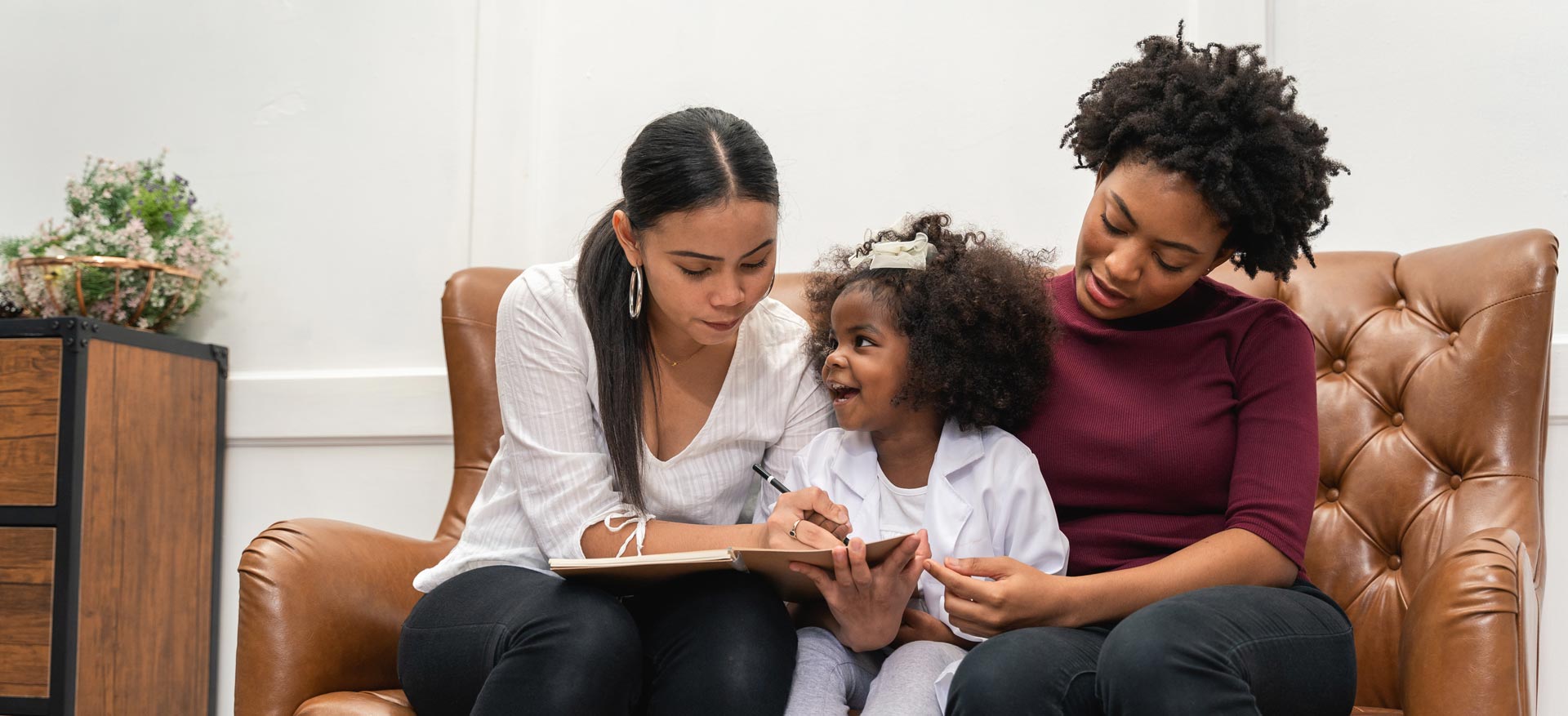Talking to Children About Diverse Families

Children are inherently curious and will ask questions about families that are different to their own. Here are a few tips to help teach them about diversity.
Families come in all shapes and sizes. It is completely natural for curious children – who are known for their hilariously blunt questions – to ask about family structures that are different to their own. Children understand the world through categorisation, making sense of their environment by sorting people and things into boxes they can understand. Encouraging a culture of acceptance from a young age help children to support diversity as they grow.
Answering Questions
When children become aware of diverse family structures, they might ask a question such as, "Can someone have two mummies?" Usually when a young child asks such a question, they are looking for a "yes" or "no." Children are not typically on a journey to seek a deeper level of understanding. Many of us tend to give more information than necessary, but young children don’t associate the adults in families with their sexual orientation.
Preschool children are concrete thinkers and not ready for, nor do they want, a philosophical discussion. Young children are simply attempting to find their place in this big world and trying to make sense of the concept of family, whether other families are similar to their own, or completely different.
What children are doing is working out how they feel about things. Their growing awareness of diverse family structures provides rich opportunities to help them celebrate differences. Children usually follow the behaviour of adults in their life, so modelling respect and reinforcing their positive actions helps them to be accepting from an early age.
So, when children ask, "Can a family have two mummies?" one suggested response is: "Yes, some families may have two mummies, one mummy, no mummy, or even lots of mummies. And some families may have two daddies, one daddy, no daddy, or even lots of daddies. Some families also include grandparents, foster parents, aunts, and uncles. Any combination works. It’s love that makes a family—just like in our family."
Children tend to thrive when they come to understand there are varying family structures and that all families are wonderful, so long as the people in them love and care about each other. This repeated message helps children feel secure, even if their family configuration changes through death, separation, or other life events.
One mum reflects on her daughter asking a similar question:
“Nowadays my daughter doesn’t even blink that her best friend has no dad but three mums. It’s just a normal matter of fact. When the girls first met a few years ago, my daughter asked why her friend doesn’t have a dad and instead three mums. It embraced this moment to teach her about acceptance, diversity, inclusion and, most importantly, love.”
Children’s Books About Diverse Families
Literature is a wonderful way to expose children to new concepts and values. These books help to communicate that all kinds of families and people are acceptable. There may be different values and structures, but in the end, it’s about family.
- The Great Big Book of Families by Mary Hoffman: This vividly illustrated book features a diverse variety of family structures, exploring what the family members do and where they live.
- The White Swan Express by Jean Davies Okimoto and Elaine M. Aoki: This tender story is about a quartet of parents adopting a quartet of Chinese orphans. It just so happens that the four families consist of a single mom, a heterosexual couple, a lesbian family, and an interracial family.
- The Family Book by Todd Parr: In this book, the author celebrates all types of families in a funny, reassuring manner. He includes diverse family structures like adoptive families, stepfamilies, single-parent families, two-mom and two-dad families, and families with both a mum and a dad.
- Whoever You Are by Mem Fox: This beautifully illustrated book reminds children that we may be of different nationalities, races, ethnicities, languages, or faiths, and may live our lives very differently, but we all still have the same daily needs, hopes, and dreams.
Children’s literature can often help to start conversations that you are less comfortable starting on your own, but it is good to think ahead about how to answer tough questions when they come up.
If you enjoyed this article and found it to be useful, you can check out more of our early childcare resources in our Family Resource Zone!





